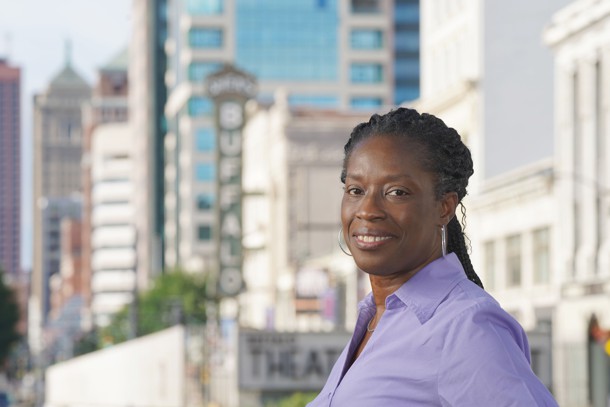NABJ Chapter Calls Removal of Sheila Rayam ‘Insulting’
Jemele Hill to Lead New Sports TV Newsmagazine
Increasingly, More Put Their Trust in Gossip:
Social Media Gains With Blacks, Young Adults
. . . For Blacks, Climate Tops Border as Policy Issue
205 Small Newsrooms to Split $20 Million
Perceptions Trump Facts on ‘Better Off’ Question
Harris Appearance on Fox Yields High Ratings
Writers Urge Caution in Linking Others with Diddy
Safety Nets Fail Surviving Victims of Gun Violence
RTDNA Spotlights Banking Bias Against Indigenous
Urgent Pleas Seek Aid for Journalists Hit by Israel
Cuba Cracks Down, Then a Massive Power Blackout
Short Takes: Ta-Nehisi Coates, CBS and Tony Dokoupil; Howard University’s Cathy Hughes School of Communications; Sputnik radio stations in U.S.; Mel Showers; Tammy Robinson; recognizing “the largest known domestic slave sale in United States history”; 1930s deportation of Mexican-Americans; Derrick Z. Jackson, Candace Dantes and Outdoor Writers Association of America;
Edward R. Murrow Awards; Scripps Howard Journalism Awards; Fox Soul’s “Truth Talks”; advice on covering Native communities; layoffs at Global Press; Iranian-American journalist held in Evin prison; Latin American laws targeting civil society, journalists; Venezuela cancels journalists’ passports;
Displaced journalists in DRC continue to report; Chinese news agency on negative Africa coverage; Nigerian journalists escape death by whiskers; Tanzanian newspapers suspended; gender disparity in Sudanese media institutions
Homepage photo: Sheila Rayam in her adopted city of Buffalo, N.Y., by Derek Gee/Buffalo News
Support Journal-ismsDonations are tax-deductible.
In this April 26 video, Buffalo News Editor Sheila Rayam and reporter Mackenzie Shuman discuss reporting on environment and climate change issues in the Buffalo Niagara Region. (Credit: YouTube)
NABJ Chapter Calls Removal of Sheila Rayam ‘Insulting’
Sheila Rayam, the first African American editor at the Buffalo News, has been ousted by Lee Enterprises, the paper’s owner, and Friday the Buffalo Association of Black Journalists called the move and the “lack of transparency” surrounding it “insulting.”
“The Buffalo News on Oct. 8 published a story that mentioned Rayam’s name just once — to announce that she would be replaced,” the association said. “The paper never acknowledged the history-making nature of Rayam’s appointment nor her contributions to the paper and to the community in the two years she was there.
“That lack of acknowledgement was insulting both to Rayam and to the community that saw so much hope in her appointment. The Buffalo News and Lee Enterprises must do better.”
Late Monday, Tracy Rouch, director of communications for Lee Enterprises, responded to a request for a response by messaging, apparently after some consultation, “We do not comment on personnel matters.”
Rayam did not respond immediately to a similar reqeust. [Oct. 22 update: Rayam messaged, “Respectfully, I decline to comment.”]
Rayam was named editor in 2022, “as The News continues to cover the aftermath of the mass shooting on May 14 at the Tops Markets store on Jefferson Avenue, where a racist gunman from the Binghamton area killed 10 Black people and wounded three others in a massacre that rattled the community and the country,” Jon Harris reported for the News at the time.
“Reading from afar, Rayam said she was struck by The News’ thoughtful coverage, in which she observed reporters trying to connect with the community and make readers understand the tragedy’s devastating impact.”
Jim Heaney wrote Oct. 8 for the Investigative Post, which describes itself as a nonprofit reporting center, “Rayam’s departure comes in the wake of Lee’s decision to eliminate 10 of the newsroom’s approximately 55 positions. That suggests her departure is in part a cost-cutting move.
“Insiders tell me Rayam, the paper’s first Black editor in chief, was frustrated with both Lee’s heavy-handed oversight of the newsroom and a reluctance of some staff members to adapt to the changing times.
“Conversely, I’m told some members of the newsroom staff were unhappy with her leadership, or what they considered a lack thereof.”
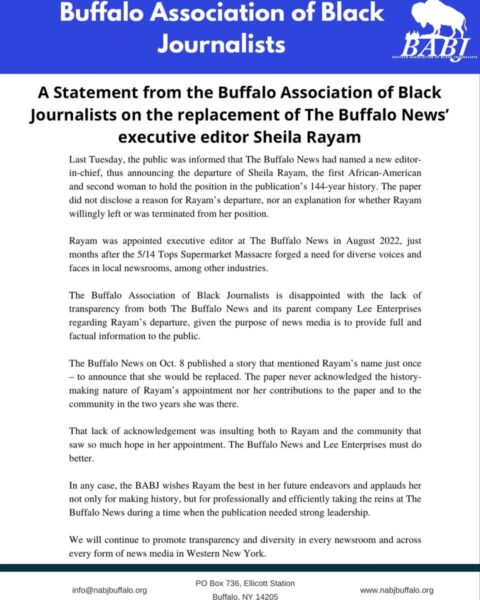
The Buffalo Association of Black Journalists is a chapter of the National Association of Black Journalists.
Rayam was the first Black journalist and the second woman — after Margaret Sullivan, now a media critic and executive director of the Craig Newmark Center for Journalism Ethics and Security — to hold the position in the News’ then-142-year history.
Rayam had been the executive editor of Gannett’s Mohawk Valley news operations, including the Utica (N.Y.) Observer-Dispatch, since April 2021. Prior to that, she spent three decades rising through the ranks at Gannett’s Democrat and Chronicle in Rochester, N.Y., after graduating from SUNY Buffalo State. She is a Rochester native.
The News’ president and publisher, Tom Wiley, was effusive then in announcing Rayam’s appointment.
“We are proud to have Sheila as the eighth editor of The Buffalo News,” Wiley said. “Her intelligence, warmth and integrity combined with her passion for journalism will help lead our organization into an exciting future. She brings an impressive history of innovative, audience-focused journalism leadership to The Buffalo News.”
In 2023, Rayam’s name surfaced in an anti-DEI lawsuit against Gannett when Steve Bradley, a white male sports editor, said that in 2021, Rayam landed a job he sought, executive editor overseeing Gannett newsrooms in New York’s Mohawk Valley.
Bradley said Rayam hadn’t been interested in the job and was recruited by “Gannett executives over more qualified White candidates. But he said he takes issue with Gannett — not Rayam or others the company opted to keep or promote,” The Washington Post reported.
Lee Enterprises owns publications in 75 markets and 26 states, including the St. Louis Post-Dispatch, the Omaha (Neb.) World Herald and the Richmond (Va.) Times-Dispatch. On Oct. 8, the company announced that Managing Editor Margaret Kenny Giancola, a Buffalo native, would become the News’ editor-in-chief.
Feedback from Karen Magnuson (pictured), editor and vice president/news of the Democrat and Chronicle in Rochester, N.Y., from 1999 to 2019:
 “I had the honor of working with Sheila at the D&C and later through the Solutions Journalism Network when the Buffalo News contributed to the New York and Michigan Solutions Journalism Collaborative. From what I observed as an avid reader and collaborator, Sheila did a fantastic job leading a newsroom that corporate decided to downsize.
“I had the honor of working with Sheila at the D&C and later through the Solutions Journalism Network when the Buffalo News contributed to the New York and Michigan Solutions Journalism Collaborative. From what I observed as an avid reader and collaborator, Sheila did a fantastic job leading a newsroom that corporate decided to downsize.
“She was a fearless advocate for solutions-oriented coverage and digital innovation in reorganizing the newsroom and serving the community. I was shocked by her dismissal and know that her star will continue to rise no matter where she goes. She’ll no doubt have better opportunities come her way. The industry desperately needs her leadership.”
Jemele Hill to Lead New Sports TV Newsmagazine
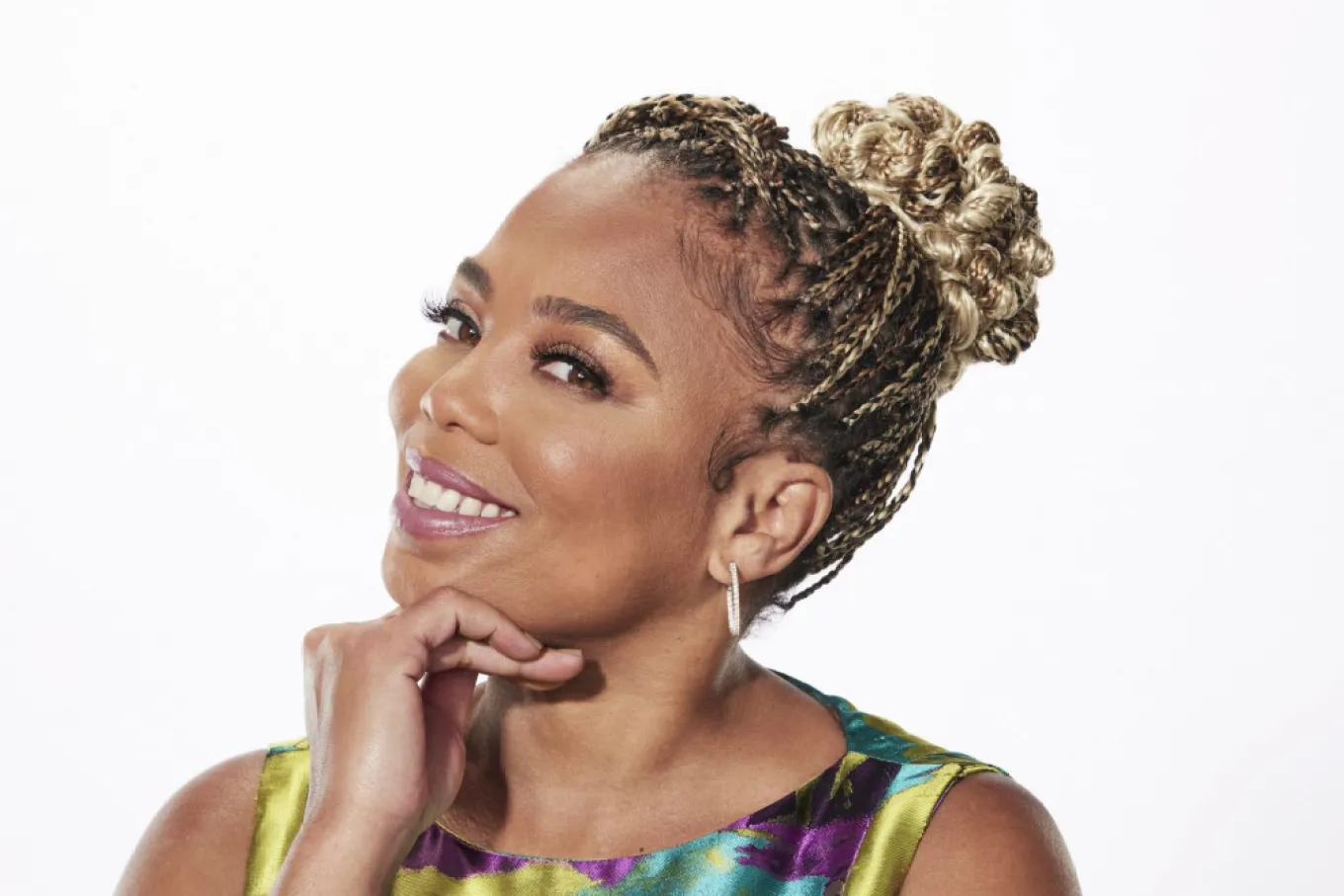 “It has been a tough few years for the sports TV newsmagazine, but Jemele Hill (pictured) thinks the format is ripe for a reinvention,” Alex Weprin reported Monday for TNT Sports.
“It has been a tough few years for the sports TV newsmagazine, but Jemele Hill (pictured) thinks the format is ripe for a reinvention,” Alex Weprin reported Monday for TNT Sports.
“The journalist and ESPN veteran is leading a new program for TNT Sports called Above The Fold, which will ‘delve into important stories and topics centered on the connection between sports and culture.’
“Hill says that the program is a ‘love letter to the profession that changed my life,’ with its title a reference to the most important stories to be featured in a daily newspaper.”
Weprin also wrote, “Above The Fold will debut on Tuesday, Oct. 22 at 5 p.m. on TruTV. Future episodes will debut Thursdays at 7 p.m. on TruTV, part of that cable channel’s new sports programming block, which launched earlier this month.”
Hill will remain a contributing writer to the Atlantic, spokesperson Anna Bross said. “It’s not a staff position – many contributing writers have other roles in media, academic, for other organizations,” Bross told Journal-isms.
Increasingly, More Put Their Trust in Gossip

Social Media Gains With Blacks, Young Adults
“Americans continue to register record-low trust in the mass media, with 31% expressing a ‘great deal’ or ‘fair amount’ of confidence in the media to report the news ‘fully, accurately and fairly,’ similar to last year’s 32%,” Megan Brenan reported Oct. 14 for the Gallup organization.
The results come as trust in social media is rising, especially among African Americans and younger adults, at the same time that disinformation and misinformation are spreading, often unchecked, in this election year.
At a Journal-isms Roundtable in January on creeping authoritarianism, Charles Whitaker, dean of the Medill School of Journalism, Media, Integrated Marketing Communications, said, “We did a survey of Chicago area students aged 15 to 20 and found that over 70 percent of them said they do not watch any form or consume any form of news.
“Their news diet has a very well-worn pattern of TikTok videos and things that are not necessarily related to civics and the functioning of the democracy.” Journalists should be asking, “How does one get through?” the dean said.
Earlier this month, PEN America brought together top journalists and experts to discuss the serious dangers of disinformation in the final weeks before Election Day. Among the trends that worried them most is the decline of content moderation online.
“The thing that keeps me up at night is that we’ll continue to see a race to the bottom by social media platforms in terms of responding to this issue,” said Samuel Woolley, University of Pittsburgh professor, disinformation researcher and author. “We were seeing a lot of action in the space, then suddenly, we’ve been seeing a lot of inaction and actually willful negligence, led by some folks that I’m sure I don’t need to mention.”
Gallup reported that “Americans’ trust in the media — such as newspapers, television and radio — first fell to 32% in 2016 and did so again last year.
“For the third consecutive year, more U.S. adults have no trust at all in the media (36%) than trust it a great deal or fair amount. Another 33% of Americans express ‘not very much’ confidence. . . . Local and state governments and the American people as a whole are the only entities garnering trust from more than half of U.S. adults.”
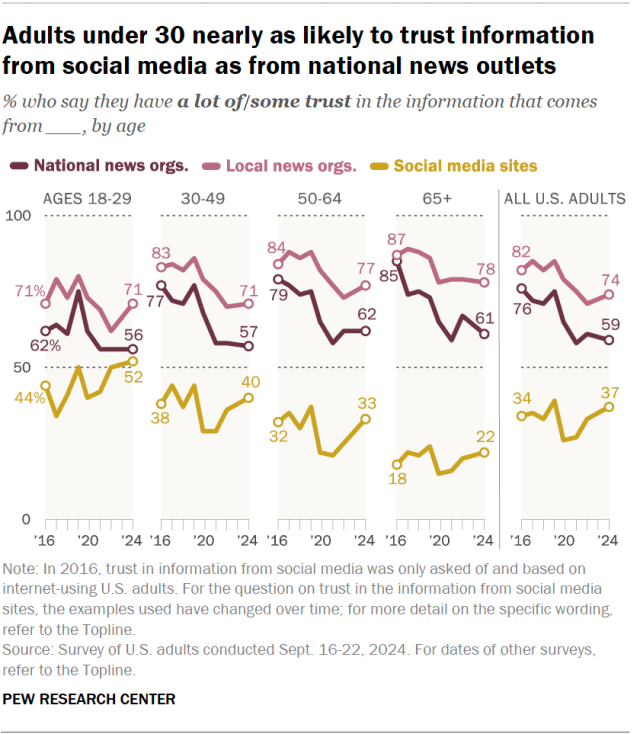 Separately, the Pew Research Center zeroed in on young adults. “Across most age groups, Americans remain far less likely to trust information from social media sites than from national and local news organizations. But the youngest adults are an exception, it reported Thursday.
Separately, the Pew Research Center zeroed in on young adults. “Across most age groups, Americans remain far less likely to trust information from social media sites than from national and local news organizations. But the youngest adults are an exception, it reported Thursday.
“Adults under 30 are now nearly as likely to have a lot of or some trust in the information that comes from social media sites (52%) as from national news organizations (56%). More young adults (71%) express trust in information from local news outlets.”
By race, Blacks were more likely than whites to trust social networking sites such as Facebook and Twitter.
Asked whether they trusted national news organizations a lot or somewhat, 57 percent of whites said yes, as did 65 percent of Blacks.
For local news organizataions, figures for both whites and Blacks stood at 75 percent.
However, for social media, the results on trust were 32 percent of whites and 47 percent of Blacks.
Figures for the news organizations have steadily decreased, while trust in social media has risen.
For whites and Blacks, the figure for national news organizations was 76 percent in 2016; and 81 percent for both groups then.
For social networking sites such as Facebook and Twitter, the figure in 2016, based on social media web users, was 31 percent for whites and 43 percent for Blacks.
- Tim Richardson, The Hill: Journalists can’t win the fight against fake news without citizens’ help

Africa has some of the poorest and hottest countries in the world. This means that young African children are at particular risk of heat-stress impacts.(Credit: Riccardo Mayer/Shutterstock)
. . . For Blacks, Climate Tops Border as Policy Issue
A survey by the Carnegie Endowment for International Peace shows that “Black voters (48 percent) ranked climate change as their top foreign policy concern, while Hispanic (51 percent) and White (52 percent) respondents prioritized immigration at the U.S.-Mexico border,” reports Carnegie’s Christopher Shell.
The survey, taken in late August and published Oct. 11, also showed, “On the two top domestic concerns, undecided Black respondents felt [Vice President Kamala] Harris could do a better job on the economy (38 percent versus 20 percent)” for former president Donald Trump. “However, opinions were more divided on who could handle inflation,” with 22 percent favoring Harris and 21 percent favoring Trump.
“In terms of foreign policy, undecided Black voters preferred Harris to handle climate change, with 27 percent of respondents believing she would do a better job compared to 9 percent for Trump. The same holds true for undecided White respondents (33 percent versus 4 percent) and Hispanic respondents (21 percent versus 11 percent).”
“The partisan divide was most significant among Black voters, with 66 percent supporting Harris and 18 percent backing Trump. . . .
“Among Hispanic voters, the partisan gap is narrower, with 45 percent intending to vote for Harris compared to 37 percent for Trump. Asian Americans in our poll leaned toward Harris as well, with 50 percent supporting her and 29 percent favoring Trump.“
“For undecided Black respondents, Trump was favored on several issues: immigration at the U.S.-Mexico border (32 percent versus 13 percent), relations with China (32 percent versus 12 percent), the war between Russia and Ukraine (24 percent versus 17 percent). On the war between Israel and Hamas, undecided Black respondents were evenly split, with 14 percent favoring Harris compared to 13 percent favoring Trump.”
In addition, “While Black Americans generally hold liberal views on immigration, the recent influx of migrants into economically deprived neighborhoods in cities like New York and Chicago, coupled with the rise of what some describe as ‘nativist’ movements in Black communities, may explain why immigration ranked higher among Black Trump supporters and why roughly two in ten Black voters support Trump.
“This is not to suggest that correlation equals causation; rather, it is important to note that this level of support for a Republican candidate is unprecedented and Trump’s alarmist rhetoric on immigration may speak to the sensibilities of some Black voters.”
- Matthew Ballew, Edward Maibach, John Kotcher, Parrish Bergquist, Seth Rosenthal, Jennifer Marlon and Anthony Leiserowitz, Yale Program on Climate Change Communication: Which racial/ethnic groups care most about climate change? (April 16, 2020)
- Michael Sarpong Mfum, RFI (Radio France Internationale): Ghana loses historic forts along its coastline to climate change
- Adriana Pérez, Chicago Tribune: Distressed about climate change, a ‘supermajority’ of young Americans across the political spectrum want bolder action
- Alessandra Prentice, Reuters: Climate change worsened rains in flood-hit African regions, scientists say (Oct. 22)
Hola Carolina produced this video in 2020, describing itself as a “nonprofit organization providing a critical voice to the diversity of our community.” (Credit: YouTube)
205 Small Newsrooms to Split $20 Million
Lack of sufficient diversity at news organizations has long been cited for distrust in news media, adding significance to a new announcement from the philanthropic coalition Press Forward.
The coalition has a mission to inject at least $500 million into local news over five years, and on Wednesday it announced $20 million in grants to 205 small local newsrooms.
Forty percent “of grantees are headed by Black, Indigenous and other leaders of color, including:
- “Hola Carolina, which has provided critical news and information to Spanish speakers in Western North Carolina since Hurricane Helene struck, and Black Iowa News, which launched during COVID to help Black Iowans survive a virus that disproportionately harmed them,” the announcement said.
“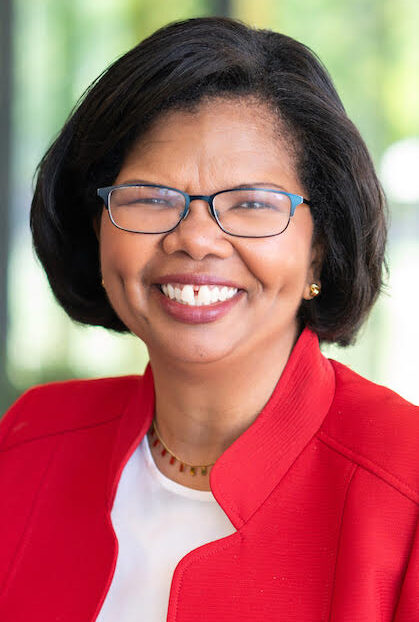 In an interview with Editor & Publisher, Dale Anglin, director of Press Forward, shared the organization’s excitement about the response and the diversity of the recipient pool. ‘The recipients are extremely diverse, representing newsrooms dedicated to Black, Indigenous and Latino communities, LGBTQIA people and those living in urban and rural areas.’ She said the grantees’ diversity extends beyond geography and includes newly formed digital sites, radio stations, 100-year-old print outlets and college newsrooms.”
In an interview with Editor & Publisher, Dale Anglin, director of Press Forward, shared the organization’s excitement about the response and the diversity of the recipient pool. ‘The recipients are extremely diverse, representing newsrooms dedicated to Black, Indigenous and Latino communities, LGBTQIA people and those living in urban and rural areas.’ She said the grantees’ diversity extends beyond geography and includes newly formed digital sites, radio stations, 100-year-old print outlets and college newsrooms.”
Sophie Culpepper added for Nieman Lab:
“Martin Reynolds, co-executive director of the Maynard Institute, was a signatory of an open letter that made the rounds last fall calling for Press Forward to distribute its funding equitably. He was also, in this open call, an application reviewer and an organization he co-founded (Oakland Voices) received funding, though he was not involved in that application.
“As a signatory of that letter, ‘it is exciting to see how 40% of grantees are BIPOC-led organizations, particularly since only 30% of applicants were BIPOC,’ Reynolds told me. He wonders why more BIPOC-led outlets didn’t apply, he added, and hopes Press Forward will explore any potential barriers that limit newsrooms from applying. (Anglin emphasized the work Press Forward did to get in front of as many communities and get the word out in as many ways as possible for this open call.)
“Reynolds appreciated that the application rubric explicitly named ‘communities of color’ under the addressing gaps in coverage criterion, but would have liked to see race mentioned more explicitly in other sections of the rubric, including the leadership section. . . .”
- Jake Lahut, Columbia Journalism Review: The decline of local news has become a campaign problem (Sept. 5)
- Maribel Pérez Wadsworth, Knight Foundation: Accelerating Philanthropy – An update from Maribel Pérez Wadsworth
Perceptions Trump Facts on ‘Better Off’ Question
“More than half of Americans (52%) say they and their family are worse off today than they were four years ago, while 39% say they are better off and 8% volunteer that they are about the same,” Mary Claire Evans reported Friday for the Gallup organization.
“The latest findings are from a Sept. 16-28 poll, which also finds differences among partisans’ perceptions on this measure — Democrats (72%) are much more likely than independents (35%) or Republicans (7%) to view themselves as ‘better off.’
“The higher-than-usual percentage of U.S. adults who say they are worse off this year is largely owing to Republicans’ much greater likelihood to say this than opponents of the incumbent president’s party had been in prior election years. . . .”
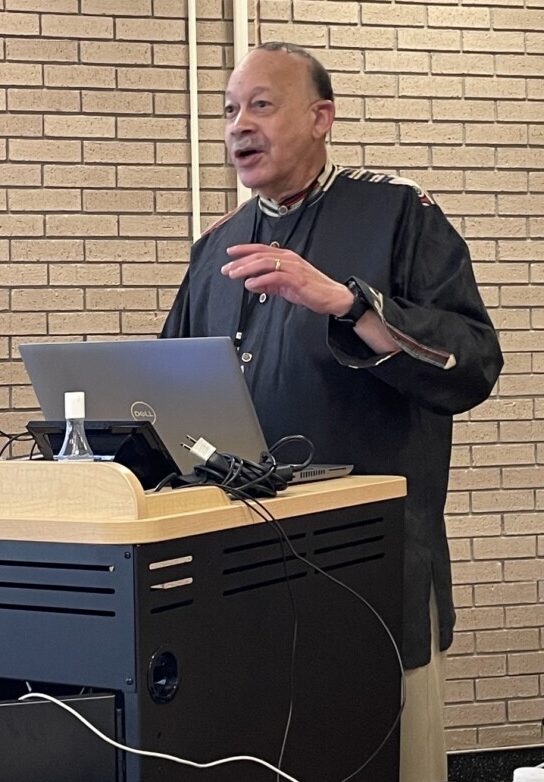 In June, Journal-isms asked Samuel Myers Jr. (pictured, credit: X), a Black economist at the University of Minnesota’s Humphrey School of Public Affairs, who has joined others to educate younger generations of color to become Ph.D. economists, what is and what is not within the power of the U.S. president to control everyday prices.
In June, Journal-isms asked Samuel Myers Jr. (pictured, credit: X), a Black economist at the University of Minnesota’s Humphrey School of Public Affairs, who has joined others to educate younger generations of color to become Ph.D. economists, what is and what is not within the power of the U.S. president to control everyday prices.
He replied, “It is typically unusual for presidents to ‘control’ prices. Wage-price controls under the Carter Administration are often credited with one of the main sources of public discontent” causing President Jimmy Carter to lose to Ronald Reagan. “For more on the hyper-inflation during the Carter years and the policies implemented by Ray Marshall, the Secretary of Labor, see: < https://www.dol.gov/general/aboutdol/history/dolchp08 >.”
“The specific things that presidents can do to affect price changes include import restrictions, currency exchange policies, critical supply management, and public displays of aversion to price increases among regulated companies. So, two points: a) it is possible for a president to affect prices, but b) historically, it has come at a high political cost.”
Myers also assessed news coverage of the issue (scroll down).
Asked about new Gallup finding, the professor added Saturday, “Perceptions do matter. And, while many economic indicators — e.g. unemployment rates or inflation rates — show that things are actually much better now than during the height of the pandemic, for political reasons, what matters is what people believe and not necessarily what the facts show.
“So, unfortunately, many current policy positions are being driven by influencers and the beliefs or perceptions and not by the hard facts.
“Let me also be clear, the hard facts are about the mean or median participants in the economy. The influencers and those driving many perceptions about the economy often are not at the mean or median. And, it doesn’t help a struggling person who is out of work to claim that unemployment rates are many times lower now than they were during the pandemic.”
- Louis Jacobson, PolitiFact: Fact check: Did Black wages in the US rise ‘massively’ under Donald Trump?

Overall, Brian Stelter wrote for CNN, Bret Baier interrupted Vice President Kamala Harris “at least 38 times in 27 minutes, about twice as often as Baier interjected with Trump (at least 28 times in 36 minutes).” In the Guardian, Margaret Sullivan wrote, “This was grievance theater, not political journalism. But Harris got in her licks. She had her moments.” (Screen shot)
Harris Appearance on Fox Yields High Ratings
“Kamala Harris’ sit-down with Fox News’ Bret Baier Wednesday drew a 7.8 million viewers, easily beating Donald Trump’s town hall with Fox News’ Harris Faulkner, which drew 3.1 million viewers,” Ted Johnson reported for Deadline.
“The interview was Harris’ first appearance on Fox News. It was at times contentious, as Harris and Baier talked over one another at points. Harris at one point called out Baier for not running a complete clip in which Trump attacks opponents as ‘the enemy within.’ Baier later acknowledged that the wrong clip aired during the interview.
The interview came in a week in which Harris broadened her media appearances to include more nontraditional outlets; Trump supporters attacked what they called Harris’ handling of the 2007 murder of Black journalist Chauncey Bailey; the Marshall Project found that most inmates responding to a survey said they would vote for Trump; an ad from the GOP candidate running in a Black newspaper gave the wrong date for Election Day, leading to charges that the “mistake” was deliberate; and the news media examined the role of sexism in the campaign. All of this while continuing to discuss the unenthusiastic views of some Black men and other African Americans toward Harris.
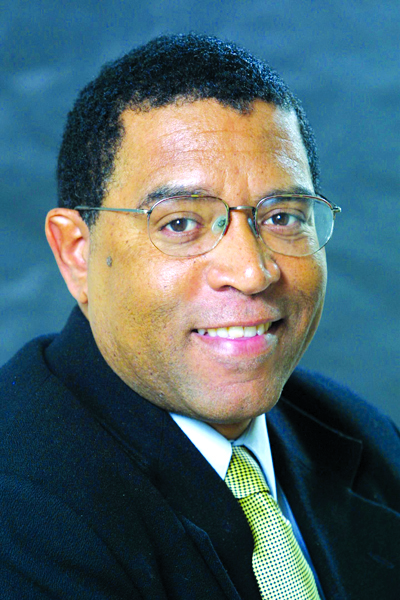 The murder of Bailey (pictured) “has become a sound bite in the presidential election, featured in a national ad blitz by Donald Trump and supporters that seeks to paint Kamala Harris as soft on crime,” Grant Stringer reported Thursday for the San Jose Mercury News.
The murder of Bailey (pictured) “has become a sound bite in the presidential election, featured in a national ad blitz by Donald Trump and supporters that seeks to paint Kamala Harris as soft on crime,” Grant Stringer reported Thursday for the San Jose Mercury News.
“Harris is expected to win California easily, so most Bay Area voters probably won’t see the pair of ads. They claim that Harris was too lenient as district attorney in San Francisco and failed 17 years ago to prevent the killing of Oakland Post editor Chauncey Bailey.
“However, a relative of Bailey’s and those familiar with the case say there’s no link between his assassination and Harris’ record as a prosecutor. . . .”
The Harris campaign, previously criticized for not doing enough media interviews, said Saturday, “This past week, top Harris-Walz campaign surrogates and advisors took over the airwaves – praising Vice president Harris’ Opportunity Agenda for Black Men across nationally syndicated Black radio shows. The media blitz comes as the Harris-Walz campaign continues efforts to reach Black voters where they are at, utilizing trusted surrogates to engage with Black Americans across the country through diverse mediums on the issues that matter most to them.
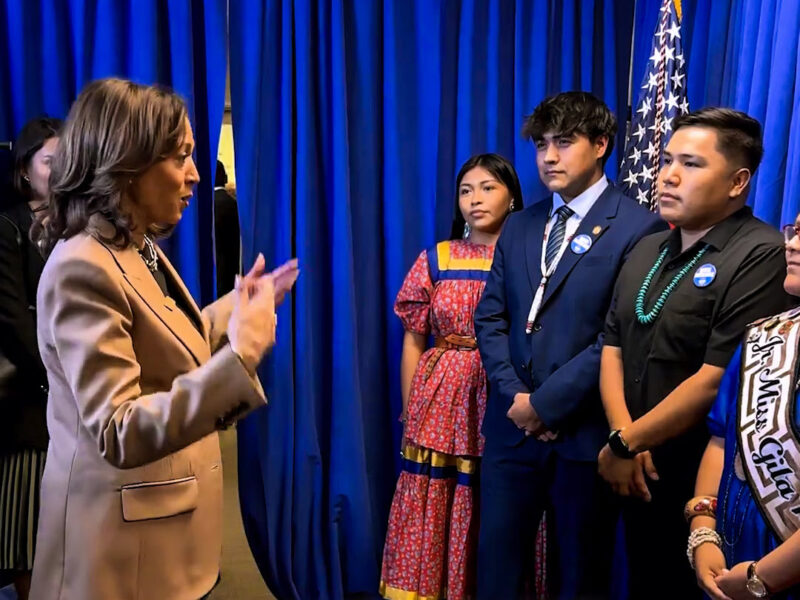
“Your voice is your vote and your vote is your power and never let anybody take your power from you,” Kamala Harris told Native youth in a 46-second campaign video released on Indigenous Peoples Day, Oct. 14.
“Earlier this week, Vice President Harris rolled out her Opportunity Agenda for Black Men, and joined Roland Martin Unfiltered, The Shade Room, and Charlamagne Tha God to discuss in detail how her vision for an opportunity economy will benefit Black Americans while also speaking directly to Black men about her Opportunity Agenda,” the Harris campaign continued.
Meanwhile, Nicole Lewis, Shannon Heffernan and Anna Flagg reported Thursday for the Marshall Project that “More than 54,000 people in 785 prisons and jails in 45 states and the District of Columbia responded” to the survey by the nonprofit news organization, which focuses on criminal justice.
It found :
- “Most respondents said they would vote for Trump, and support was particularly strong among White men. A substantial minority of Black men said they’d vote for Trump, too, if given the chance.
- “As previous surveys showed, a large share of people behind bars from all racial backgrounds don’t identify with either major political party — instead identifying as independent.
- “A majority of those who identified as Democrats and independents said the country is ready for a woman president. Republicans are more divided on the question.
- “When Harris replaced President Biden as the nominee, she won more support, appealing to a subset of Trump supporters or people who said they wouldn’t vote in a previous version of the survey.”
In a complaint filed Oct. 13 with the state attorney general, the Michigan Legislative Black Caucus accused the campaign of Tom Barrett, a Republican vying for a Michigan congressional seat, of misleading Black voters to suppress turnout.
A full-page ad that appeared in the Oct. 2 issue of the weekly Michigan Bulletin, based in Lansing, featured the phrase “On November 6 VOTE FOR TOM BARRETT.” Election Day is Nov. 5.
“Volunteer publisher” Marcus Jefferson did not respond to an emailed query about whether the paper’s employees saw the ad before it was published.
Meanwhile, a week after former president Barack Obama questioned whether sexism was at play in the reluctance of some Black men to support Harris, The Washington Post ran a lengthy front-page piece by Maeve Reston and Ashley Parker under the headline, “Seeking a historic win, Harris faces a familiar foe: Sexism.” The subhead was, “Is America ready for its first woman president? Polling and interviews with many voters suggest the answer is yes — but with a lot of caveats.”
- Aala Abdullahi, Marshall Project: What People Behind Bars Really Think About the ‘Cop vs. Felon’ Election
- Char Adams, NBC News: The simple reason Kamala Harris is on The Shade Room
- Chauncey Alcorn, Capital B: Black Seniors for Harris Help Fuel Record Turnout as Early Voting Begins in Georgia
- Zeeshan Aleem, MSNBC: Trump’s new campaign strategy is as incoherent as his rally speeches
- Zeeshan Aleem, MSNBC: A new survey of economists undermines Trump’s biggest line of attack on Harris
- Deepa Bharath, Associated Press: Asian American evangelicals’ theology is conservative. But that doesn’t mean they vote that way
- Charles M. Blow, New York Times: When Patriarchy Trumps Race
- Jamelle Bouie, New York Times: There Is No Precedent for Something Like This in American History
- Michael Brice-Saddler, Washington Post: In a Michigan city, Harris has failed to catch fire with Black men
- Hayes Brown, MSNBC: Welcome to the uncanny valley of the 2024 election
- Stacy M. Brown, National Newspaper Publishers Association: VP Kamala Harris Unveils Extensive Agenda for Black Men, Promises Wealth-Building and Opportunity as Election Nears
- Stacy M. Brown, National Newspaper Publishers Association: Black Press Urges DSCC to Expand Black Media Reach in New Ad Campaign
- Curtis Bunn, NBC News: A Black conservative radio host invoked ‘field’ and ‘house’ slaves in arguing why some Black men back Trump
- George Chidi, the Guardian: Why are people leaving Trump rallies early? We asked them
- Cary Clack, San Antonio Express-News: Black men won’t be the scapegoats of the 2024 presidential election
- Jelani Cobb, New Yorker: What the Polls Really Say About Black Men’s Support for Kamala Harris
- Mary C. Curtis, Roll Call: An election that’s bigger than one country: November’s outcome could have dire consequences for the EU and Ukraine
- Sara Dorn, Forbes: Trump Claims ‘A Lot Of People Didn’t Know’ Harris Is Black — Months After Questioning Her Race
- Tananarive Due, HuffPost: We’re In A Real Life Horror Movie — And One Wrong Move Could Be The End Of Our Rights
- Gerren Keith Gaynor, TheGrio: ‘Frustrating reality’: Harris’ FOX interview was ultimate master class for Black women in politics
- Matt Gertz, Media Matters for America: There is no Fox “news side.” Wednesday’s Trump and Harris events prove it.
- LZ Granderson, Los Angeles Times: Trump ‘loves’ Black men? He has a history of calling for their executions
- Suzette Hackney, USA Today: How will Black voters impact 2024 election? Depends which generation you ask.
- Garrison Hayes, Reveal: Red, Black, and Blue: Mother Jones video correspondent Garrison Hayes does a deep dive into the motivations of Black Trump supporters
- Solomon Jones, Philadelphia Inquirer: Obama was absolutely right to call out sexist Black men who refuse to support Kamala Harris
- Tom Jones, Poynter Institute: Donald Trump’s friendly town hall vs. Kamala Harris’ unfriendly interview
- Charles Lane, Molly Roberts and Perry Bacon, Washington Post: We listened to Trump and Harris podcasts — so you don’t have to Both candidates are trying to humanize themselves. Is it working?
- Candace McDuffie, The Root: The 5 Spiciest Moments From Vice President Kamala Harris’ Fox News Interview
- Media Matters for America: On MSNBC, former Univision president slams the network’s Trump town hall as an “infomercial”
- Eduardo Medina, New York Times: Mark Robinson Sues CNN Over Report Linking Him to Lewd Comments on Porn Site
- Zeke Miller, Associated Press: Kamala Harris’ interview with Fox News is marked by testy exchanges over immigration and more
- Elie Mystal, The Nation: Black Men Will Vote for Harris — White Men Are the Problem
- Nicholas Nehamas and Katie Rogers, New York Times: 6 Takeaways From Harris’s Combative Interview on Fox News
- Donie O’Sullivan and Casey Tolan, CNN: Why the Harris campaign has spent $11 million on a Facebook page with 1,000 followers
- Clarence Page, Chicago Tribune: Donald Trump, spreader of conspiracy theories, needs to get out of the way
- Mahrukh Siddiqui, AsAmNews: Poll: South Asian voters highly motivated to support Harris
- Terry Tang and Linley Sanders, Associated Press: Most AAPI adults think legal immigrants give the US a major economic boost: AP-NORC/AAPI Data poll
- Brandon Tensley, Capital B: What Headlines Miss About Black Men’s Support for Harris
- Erik Wemple, Washington Post: Did Kamala Harris eke out a victory on Fox News?
- Aallyah Wright, Capital B: Why the Political Power of Black Rural Voters Is Often Invisible
Writer Touré, now with theGrio, recalls Sean ‘Diddy’ Combs yelling at him over a line in a review Touré wrote for Rolling Stone and threatening to end the writer’s career. (Credit: YouTube)
Writers Urge Caution in Linking Others with Diddy
“Nearly a year into the torrent of hellish accusations of sexual assault, physical violence, and drugging involving multimedia mogul Sean ‘Diddy’ Combs, a circus of suspicion swirls around everything he ever touched as people relitigate known controversies and tidbits we never much thought about before,” music critic Craig Jenkins wrote Oct. 7 for Vulture.
“There’s an itch to depict Diddy as a Black Jeffrey Epstein, the ringleader of clandestine, A-list perversion.
“One hundred and 20 new accusers have come forward recently, a number of whom claim they met Combs as underaged prospective performers only to be drugged and assaulted. The scale of the misconduct alleged over the past year is breathtaking. But rumor baiting is eclipsing constructive reflection. The pattern seekers are more interested in uncovering a juicier story than finding justice for victims who must now compete with specious secret-society rhetoric and crude Diddy memes to be heard.”
Other writers are saying much the same. “The media needs to handle the Sean ‘Diddy’ Combs saga with care,” reads a headline in Andscape over a piece by Shanita Hubbard, an adjunct sociology professor and author of “Ride-Or-Die: A Feminist Manifesto For the Well-Being Of Black Women.”
On HuffPost, Candice Frederick wrote, “social media users have been digging into the boundless belly of the internet for videos, photos and all else they can find on any celebrity in the 2000s that even marginally associated themselves with Combs’ White Parties and his allegedly more perilous freak-offs. (The discourse has often woefully conflated the two.)”
However, Frederick said, “It’s true that literally everyone who was anyone (and everyone who wanted to be anyone) in the ‘90s or 2000s likely encountered, partied, collaborated or was in a photo with Combs. Because he was just that ubiquitous — and highly influential.
“A perhaps more complicated truth is that many of Combs’ soirees were especially the place to be for the Black elite at the time. . . . Clearly, determining who could be an enabler in Combs’ case and any others like his is not so simple — and certainly can’t come from an out-of-context photo, video clip or social media activity.”
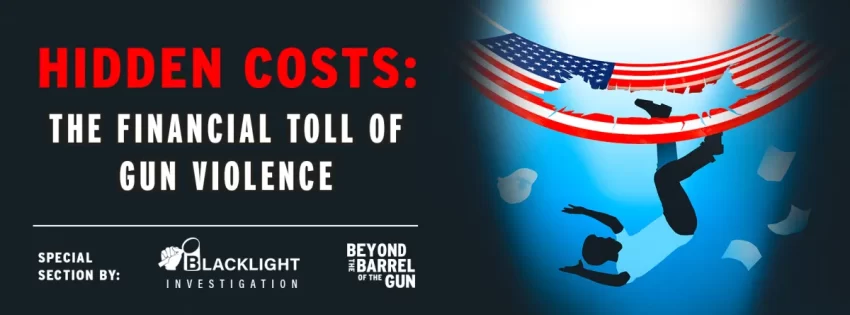
Credit: New York Amsterdam News
Safety Nets Fail Surviving Victims of Gun Violence
“Every day, an average of more than 200 Americans are hospitalized due to nonfatal firearm injuries,” Shannon Caffers wrote for the New York Amsterdam News in a series that began in August, “Hidden Costs: The Financial Costs of Gun Violence.” It is part of a larger, continuing project, “Beyond the Barrel of the Gun.”
“This series examines the wide-ranging costs of gun violence in America, and reveals how the country’s safety net programs are failing those whose lives are disrupted by this violence. It also highlights an array of grassroots groups, disability organizations, and hospital programs that are stepping up to fill the gap,” said the news organization, part of the Black press.
“Everytown for Gun Safety estimates that more than 73,000 nonfatal shootings take place across the nation each year. Yet the lasting toll of nonfatal gun violence is often hidden from view, especially in marginalized, under-resourced neighborhoods.”
The series’ key findings:
- “Many factors can prevent gun violence survivors from returning to work post-injury. . . .
- “Inadequacies in victims assistance and disability programs means that gun violence survivors with limited resources struggle financially post-injury. . . .
- “These inadequacies make some gun violence survivors vulnerable to re-injury, fueling a cycle of violence. . . .
- “Black and Brown Americans are disproportionately impacted. . . .
- “Community programs in impacted neighborhoods are stepping up to help survivors. . . .”
RTDNA Spotlights Banking Bias Against Indigenous
“One-third of Native community members have encountered bias and/or exclusion from the financial services sector while seeking services related to banking, lending, saving, credit, financial planning and more. That’s double that of the general U.S. adult population,” Molly McCluskey wrote Oct. 14 for the Radio Television Digital News Association.
 The article’s headline was, “Native Americans and banking access: What journalists should know.”
The article’s headline was, “Native Americans and banking access: What journalists should know.”
The one-third figure comes from a poll by the National Endowment for Financial Education published in November 2023, which surveyed 750 adult Indigenous Americans from across the United States, who identified as American Indian, Alaskan Native, Native Hawaiian or Other Pacific Islander.
“Additionally, 17% of respondents said neither they nor anyone in their household own a bank account, which is nearly quadruple the national estimate of 4.5% of households, according to the FDIC,” McCluskey wrote.
She added, “In 2019, Wells Fargo settled a lawsuit with the Navajo Nation for ‘predatory and unlawful’ practices against the Navajo people. The bank agreed to pay $6.5 million.
“As the Navajo Times reported, ‘The Navajo Nation and its members entrusted Wells Fargo with their finances and personal information,’ stated the complaint. ‘In return, Wells Fargo preyed on members of the Navajo Nation, including Navajo elders, who are some of the Navajo Nation’s most vulnerable citizens.’
“Overall, the bank now owes billions of dollars in lawsuits while also touting its significantly smaller investments in Native communities nationwide. . . .”
Al Jazeera cameraman Fadi al-Wahidi has fallen into a coma while waiting for Israeli authorities to approve his medical evacuation from Gaza, the network reported Thursday. “He was shot in the neck by Israeli forces while reporting one week ago.” (Credit: Al Jazeera/YouTube)
Urgent Plea Seeks Aid for Journalists Hit by Israel
“Three leading press freedom organizations, the Committee to Protect Journalists (CPJ), Free Press Unlimited (FPU), and Reporters Without Borders (RSF), on Tuesday, October 15, urgently called on the Israeli military office responsible for humanitarian coordination, known as COGAT, to authorize the evacuation of two critically wounded journalists who require immediate, lifesaving medical treatment,” CPJ reported.
“The letter, a rare public plea, follows frustrated diplomatic efforts and direct appeals to COGAT by the three organizations since the journalists — Ali Al-Attar and Fadi Al Wahidi, camera operators for Al Jazeera — sustained severe injuries while working in Gaza last week. In the letter, the organizations called for expedited approval for the journalists’ medical evacuation to Jordan or Qatar.”
On Thursday, Al Jazeera reported that Al Wahidi “has fallen into a coma while waiting for Israeli authorities to approve his medical evacuation from Gaza. He was shot in the neck by Israeli forces while reporting one week ago.”
Reporters Without Borders said the two journalists were seriously injured by Israeli forces, both hit while covering the Israeli army’s siege in northern Gaza. “On 7 October, Ali al-Attar, a cameraman for Al-Jazeera, was hit by shelling in Deir al-Balah, in central Gaza. The following day, Fadi [Al Wahidi], also a cameraman for the Qatari news channel, was gravely injured in the encircled camp of Jabalia in northern Gaza.”
- Times of Israel/Agencies: Saudi TV station ransacked in Iraq after calling Sinwar, Nasrallah ‘terrorists’
The Canadian Broadcasting Corp. reports Saturday on Cuba’s second total power blackout in two days. CubaNet reported Sunday, “According to videos on social media, multiple cacerolazos and peaceful protests were taking place during the night of October 19. The demonstrations were concentrated mainly in the provinces of Havana and Santiago de Cuba.” (Credit: YouTube)
Cuba Cracks Down, Then a Massive Power Blackout
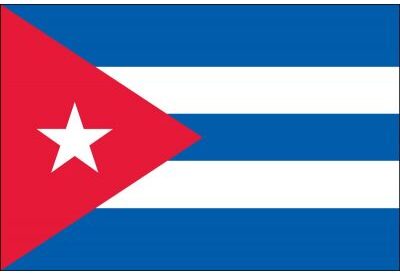 Cuba is going through its worst economic crisis since the fall of the Soviet Union, with an island-wide power blackout and an incoming hurricane Oscar adding to the catastrophe.
Cuba is going through its worst economic crisis since the fall of the Soviet Union, with an island-wide power blackout and an incoming hurricane Oscar adding to the catastrophe.
But even before the country first lost electricity Friday after a major power plant failure, independent journalists were feeling a crackdown by the dictatorship, reports Journal-isms correspondent Julio Antonio Rojas from Havana.
As explained in this space last week, a new social communication law, which bans independent media outlets in Cuba, went into effect on Oct. 4. In line with the new law, the Cuban government has begun to round up independent journalists who do not toe the government line, threatening them with jail and prompting some to leave the country.
Rojas reports that the Cuban Institute for the Freedom of Expression and Press Office (ICLEP) registered 36 violations of the new law, of which 29 were violations of freedom of expression and seven of freedom of the press.
The Cuban music magazine AMPM was forced to announce an “indefinite pause” in its publications in the face of constant pressure from the State Security.
- Sarah Moreno, Miami Herald: Telemundo anchor Gloria Ordaz found in Miami ‘opportunities that Cuba did not offer’ (paywall)
- Orlando Freire Santana, CubaNet: A communication law to increase repression and censorship
Short Takes
- “After he sparked a full-blown crisis at CBS News with his explosive interview of acclaimed author Ta-Nehisi Coates, anchor Tony Dokoupil has spent the past few days reaching out to network colleagues on what some are describing as an ‘apology tour,’ three sources familiar with the matter told me,” Justin Baragona reported Thursday for Zeteo, the new site founded by former MSNBC journalist Mehdi Hasan. Amid the continuing commentary, Karen Attiah wrote under the headline “It was Ta-Nehisi Coates who asked the tough questions on ‘CBS Mornings’ ” for The Washington Post, while John McWhorter contended in The New York Times, “The idea that Coates should not have been asked such tough questions reflects a pernicious image of Black people, and Black men in particular. . . .”
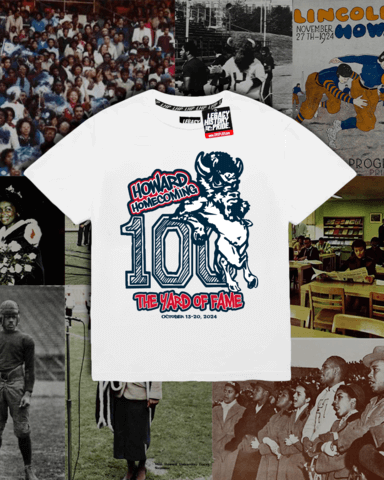 An “Open House” at Howard University’s Cathy Hughes School of Communications Friday saw the school’s namesake make a pitch for donations to construct a new state-of-the-art building for the school, which has been without a permanent home since March 2020, when the country shut down for the COVID pandemic. As part of the universitys’ homecoming weekend, about 125 alumni and current and former faculty members gathered at the former D.C. school building that now houses the school, founded in 1971. Interim Dean Chuka Onwumechili said proposals for the new building are in the very early stages and must be approved by new Howard President Ben Vinson.
An “Open House” at Howard University’s Cathy Hughes School of Communications Friday saw the school’s namesake make a pitch for donations to construct a new state-of-the-art building for the school, which has been without a permanent home since March 2020, when the country shut down for the COVID pandemic. As part of the universitys’ homecoming weekend, about 125 alumni and current and former faculty members gathered at the former D.C. school building that now houses the school, founded in 1971. Interim Dean Chuka Onwumechili said proposals for the new building are in the very early stages and must be approved by new Howard President Ben Vinson.
- “Radio stations in two markets will be dropping their affiliation with Russia-backed programming distributor Sputnik by the end of the week, The Desk has learned,” Matthew Keys reported Tuesday for The Desk. “The stations affected are two in the Washington, D.C. metropolitan area and three others in Kansas City, which have offered programs produced and distributed by Sputnik through time-brokerage agreements for a few years. . . .”
Mel Showers discusses his life as he accepts induction into the Alabama Broadcasters Association Hall of Fame in Birmingham in 2015. (Credit: YouTube)
- “Legendary News 5 anchor Mel Showers, who worked at Mobile’s WKRG-TV for nearly 50 years, died this weekend at 78 years old, according to a recent announcement from the station,” Heather Gann reported Saturday for al.com. Jessica DeWeese wrote Monday for subscription-only NewsBlues, “Showers began his broadcasting career in the late 1960s, during the height of the Civil Rights Movement. In a 2019 interview with WKRG’s Peter Albrecht, Showers explained how the station proactively sought to hire a Black employee to avoid protests. WKRG said, ‘We’re not going to have any picketing outside our station. We’re going to go out and find somebody Black,’” he recalled. Showers was an English professor at Bishop State Community College. The Alabama Broadcasters Association wrote, “Hiring Mel proved to be more than a good hire. Not only had he been through military intelligence training, he would step in with broadcast training and an FCC license. Mel proved to be a talented and committed newsman.’ ”
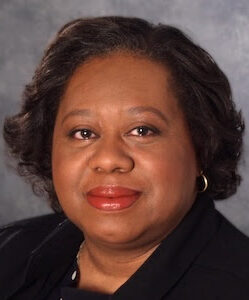 “Tammy Robinson (pictured), a former VP and director of programming for the WNET Group in New York, died Oct. 7. She was 77,” Julian Wyllie reported Wednesday for Current. “Robinson received several career-related honors, including the International TV Programs Award, a New York Festival Award for The Power of the Past with Bill Moyers, a Film Council of Greater Columbus Award for In Performance at the White House, a Primetime Emmy Award for Smithsonian World: Tales of the Human Dawn, and the Catalyst Award for Broadcasting from the National Association of Minority Media Executives. . . .”
“Tammy Robinson (pictured), a former VP and director of programming for the WNET Group in New York, died Oct. 7. She was 77,” Julian Wyllie reported Wednesday for Current. “Robinson received several career-related honors, including the International TV Programs Award, a New York Festival Award for The Power of the Past with Bill Moyers, a Film Council of Greater Columbus Award for In Performance at the White House, a Primetime Emmy Award for Smithsonian World: Tales of the Human Dawn, and the Catalyst Award for Broadcasting from the National Association of Minority Media Executives. . . .”
WCIV-TV in Charleston, S.C., reports that “A new historical marker in downtown Charleston has been unveiled, shedding light on a grim chapter of the city’s history related to slavery.” (Credit: YouTube)
- “As a graduate student at the College of Charleston, Lauren Davila found an ad for the auction of 600 enslaved people. A ProPublica story last year revealed her discovery and unearthed the identity of the family responsible for the sale,” the nonprofit investigative news organization wrote Thursday over a story by Jennifer Berry Hawes. “A group gathered to unveil a historical marker that announced to anyone walking by that the finely restored antebellum structure behind him once housed an auction firm that in 1835 conducted the largest known domestic slave sale in United States history.”
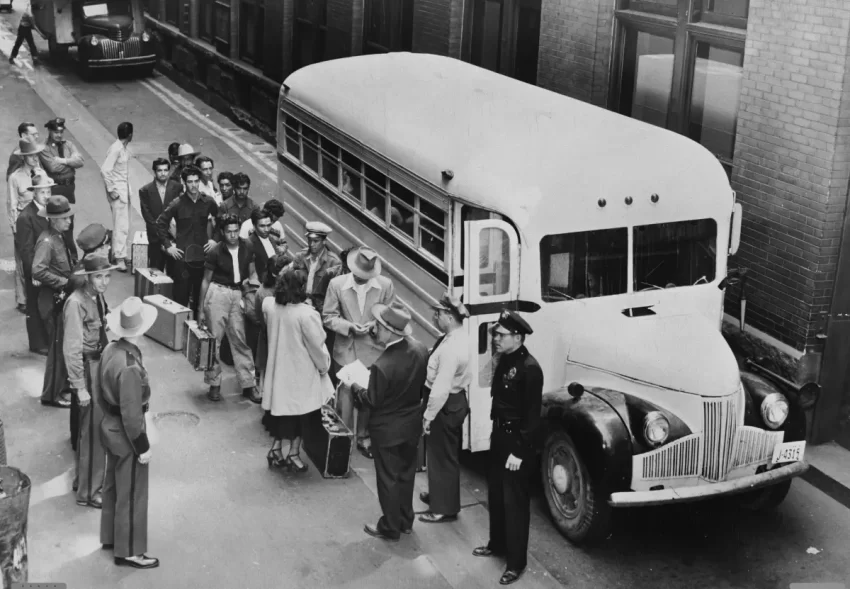
People of Mexican descent, including U.S.-born citizens, were put on trains and buses and deported to Mexico during the Great Depression. In Los Angeles, up to 75,000 were deported by train in one year, according to research by a former L.A. student. (Credit: Los Angeles Times)
- “As her junior year of high school came to a close in 2023, Tamara Gisiger’s history teacher tasked the class with a research project of their choosing,” Angie Orellana Hernandez reported in August for the Los Angeles Times. “A then-17-year-old Gisiger narrowed in on what she called an ‘underground, hurtful and dark part of history that just isn’t talked about’ — the Mexican repatriation that took place in the 1930s amid the Great Depression. The repatriation involved deporting 1 million people with Mexican heritage, 60% of whom were American-born citizens, and was one of the largest deportations in American history, according to Gisiger, who lives in New York City….” Tom Porter added Thursday for Bowdoin College, “Gisiger’s effort . . . has prompted two California state senators to get behind a bill to commemorate the repatriation with a monument in Los Angeles, where many of those who were deported came from. They hope to unveil the monument ahead of the Los Angeles Olympics in 2028.”

“Outdoor Afro launched Making Waves during 2019 in response to the alarming number of Black children who drown today tied to the historic prohibition of Black access to beaches and public pools. It is Outdoor Afro’s goal to help every Black child and their caregiver within its sphere of influence learn how to swim.” (Credit: Candace Dantes)
 Veteran Boston journalist Derrick Z. Jackson and Candace Dantes, who says she receives “inspiration flowing from my Southern roots as a fourth-generation farmer and rural community reporter,” were among the winners in the annual Outdoor Writers Association of America awards. Dantes won in the “Excellence in Craft Photography — People” category for “Making Waves,” part of a project to project by Outdoor Afro (video) to teach swimming to young African Americans. Jackson, for the Union of Concerned Scientists, won in the photo essay category for “In the Gulf of Maine, Scientists Race to Save Seabirds Threatened by Climate Change,” as well as first place for action photography (pictured) and excellence in craft photography. He also won a second place and an honorable mention.
Veteran Boston journalist Derrick Z. Jackson and Candace Dantes, who says she receives “inspiration flowing from my Southern roots as a fourth-generation farmer and rural community reporter,” were among the winners in the annual Outdoor Writers Association of America awards. Dantes won in the “Excellence in Craft Photography — People” category for “Making Waves,” part of a project to project by Outdoor Afro (video) to teach swimming to young African Americans. Jackson, for the Union of Concerned Scientists, won in the photo essay category for “In the Gulf of Maine, Scientists Race to Save Seabirds Threatened by Climate Change,” as well as first place for action photography (pictured) and excellence in craft photography. He also won a second place and an honorable mention.
- The Edward R. Murrow Awards handed out Oct. 14 by the Radio Television Digital News Association included winners for “excellence in diversity, equity and inclusion” in each platform. They were: “Dishonored,” CBS News, about LGBTQ veterans; “Racial Reconciliation at Arlington House,” NPR; “Juneteenth 2023: The Freedom to Learn,” KHOU, Houston; “He Said, She Said, They Said,” KFI-AM, Los Angeles, “a look at recent conflict between the LGBTQ+ community, parents, school boards and even the Los Angeles Dodgers”; “Wisconsin in Black & White,” (video), PBS Wisconsin in Madison; “Points North: Complete With His Language – Kenny Pheasant and the Great Lakes’ Original Tongue,” Interlochen Public Radio, Traverse City, Mich.; “How Millions are Trapped in Modern-Day Slavery at Brick Kilns in Pakistan“(video), Business Insider; and “Prison Banned Books Week Series,” The Emancipator, Boston.
(Credit: YouTube)
- Among the winners of the Scripps Howard Journalism Awards Sunday were the Boston Globe, which revisited the 1989 murders in which Charles Stuart, who is white, murdered his wife, Carol, and wrongfully blamed it on a Black man; and The Kansas City Star and The Wichita Eagle, for joint news and opinion coverage of the 2023 police raid on the Marion County (Kan.) Record. At the Star, Managing Editor Andale Gross and Yvette Walker, vice president and editorial page editor, helped lead the coverage. The Globe’s eight-part multimedia series and nine-part investigative podcast series featured columnist Adrian Walker, a 30-year Globe veteran who reported on the murder at the time. The revisit told how the police and the media got it wrong. The Record was raided in August 2023 by all five officers of the town’s police force based on a search warrant that was later withdrawn. Two days after the searches, Joan Meyer, the 98-year-old mother of the publisher and the co-owner of the paper, died, in part because of the distress caused by the raid on her home, publisher Eric Meyer said.
- “Fox Soul has set the launch of its latest original series, Truth Talks, a one-hour talk series featuring ‘provocative topics that define this generation with coveted celebrity interviews, but nothing glorified: no house band, no monologues, no media friendly chit chat… and no boundaries,” Mark K. Miller reported Thursday for TVNewsCheck. “Truth Talks is set to premiere on Oct. 21 at 8 p.m. ET. The four hosts are Ryan Cameron, a radio host and two-time Emmy Award winner; Dr. Cheyenne Bryant, psychology expert and life coach; Brii Renee, radio personality and actor; Willie Moore Jr., a nationally syndicated radio host and motivational speaker.”
- “On Oct. 7, Montana State Senator and member of the Salish and Kootenai Tribes, Shane Morigeau, and Pauly Denetclaw, a political correspondent for ICT News (formerly Indian Country Today) and member of the Navajo nation, shared insights and advice on covering Native communities,” the National Press Foundation reported. Takeaways: “Understand important legal terms”; “Being Native American is a political identity, not a racial classification”; “Each tribe is extremely different”; “Consider your current perspective on tribal nations”; Utilize the Indigenous Journalists Association’s bingo guide; and “There are more topics to cover for indigenous people than the environment.”
- Global Press, which has “has trained 275 women from Latin America and sub-Saharan Africa to remote areas of Asia, including Mongolia, to report on their home communities and counter stereotypes about the developing world often found in the Western press,” is “terminating the contracts of thirty-seven reporters, all in low- or moderate-income countries, by the end of the year,“ Sacha Biazzo reported Oct. 10 for Columbia Journalism Review. “It has also laid off four full-time employees, let go of seven contract reporters and cut back on, or stopped using, seven contract editors. . . .”
 A former journalist for Radio Europe/Radio Liberty “who returned to Iran after many years abroad has been arrested in Tehran,” a source told the U.S.-government funded news organization on Oct.15, the outlet reported Tuesday. “Reza Valizadeh (pictured), a dual Iranian-U.S. national, was arrested about three weeks ago and is facing charges, including cooperation with Farsi-language media abroad, one of his relatives told RFE/RL.” On Thursday, the Committee to Protect Journalists said it was“alarmed by reports that Iranian authorities had arrested” Valizadah “and have since detained him in Evin prison without access to a lawyer, according to a former colleague, who spoke to CPJ on the condition of anonymity, citing fear of government reprisal.”
A former journalist for Radio Europe/Radio Liberty “who returned to Iran after many years abroad has been arrested in Tehran,” a source told the U.S.-government funded news organization on Oct.15, the outlet reported Tuesday. “Reza Valizadeh (pictured), a dual Iranian-U.S. national, was arrested about three weeks ago and is facing charges, including cooperation with Farsi-language media abroad, one of his relatives told RFE/RL.” On Thursday, the Committee to Protect Journalists said it was“alarmed by reports that Iranian authorities had arrested” Valizadah “and have since detained him in Evin prison without access to a lawyer, according to a former colleague, who spoke to CPJ on the condition of anonymity, citing fear of government reprisal.”
- “Proposals for laws that target civil society are proliferating in Latin America,” André Duchiade wrote Tuesday for LatAm Journalism Review. “With the justification of increasing transparency in the third sector and protecting national sovereignty from the influence of foreign actors, Paraguay, Peru and Venezuela are currently discussing laws that interfere in the activities of these organizations. Nicaragua, Guatemala, El Salvador and Mexico have already approved or debated similar initiatives. These laws have the potential to directly affect journalism. The economic crisis in the media industry has led to an increase in journalistic organizations funded by foundations and international philanthropy. . . .”
- “Venezuela has cancelled the passports of dozens of journalists and activists since Nicolás Maduro claimed a re-election victory, part of what rights groups say is an intensifying campaign of repression against the authoritarian president’s opponents,” the Financial Times reported Oct. 12. “At least 40 people — mostly journalists and human rights activists — have had their passports annulled without explanation, according to Caracas-based rights group Laboratorio de Paz, which warns that the number is likely to be much higher due to Venezuelans’ fear of reporting cases. . . .” Reuters
- As National Hispanic Heritage Month concluded Oct. 15, Blavity spotlighted “8 Pioneering Afro-Latinx People Who Shaped US Politics And Activism.” They are: Victoria Santa Cruz, Afro Peruvian choreographer, composer, activist and poet; Philip “Felipe” Luciano, who co-founded The Last Poets in 1968 and the New York chapter of the Young Lords, advocating for Puerto Rican rights and social justice; Yvette Modestin, a writer, poet and activist; Arturo Alfonso Schomburg, key figure in the Harlem Renaissance whose extensive collection of books and artifacts formed the basis of the Schomburg Center for Research in Black Culture in New York; Rep. Grace Diaz, D-R.I.; Rep. Maxwell Alejandro Frost, D-Fla.; Rhode Island Lt. Gov. Sabina Matos and New York Lt. Gov. Antonio Delgado.
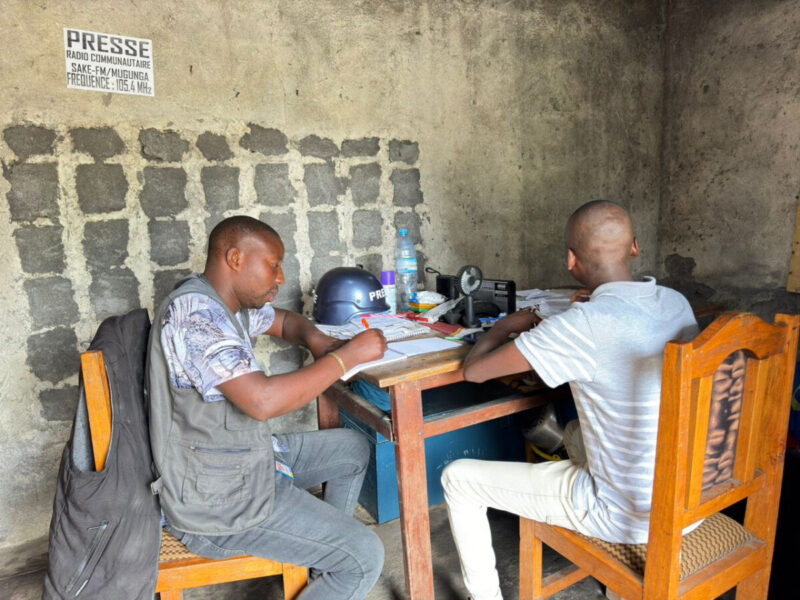
At left is Ismaël Matungulu, the director of Radio Saké FM. He is broadcasting from a displacement camp in Goma after escaping an M23 offensive in eastern Democratic Republic of the Congo. (Credit: Fidèle Kitsa/The New Humanitarian)
- Backed by neighboring Rwanda, the M23 rebel group has displaced more than 1.7 million people from the Democratic Republic of the Congo over the past two years, “many of them to overcrowded and unsanitary camps in and around Goma, which is the largest city in eastern DRC,” Goma-based journalist Fidèle Kitsa reported Oct. 14 for the Geneva-based New Humanitarian. “Among the displaced are hundreds of local journalists who escaped the fighting or direct censorship from the rebels, who occupy vast swathes of territory in the east and regularly use local media to disseminate propaganda. Some journalists have abandoned their work as a result of the upheaval, though others, like [Ismaël] Matungulu (pictured), have struggled on, broadcasting in the camps often at their own expense, or organising into unions to support one another through trying times. . . .”
- “The negative coverage of African affairs, especially by the Western media entities, is depriving the continent’s economies of an estimated US$4.2 billion annually, according to a study launched Thursday, October 10,” China’s Xinhua News Agency reports,” New Times in Rwanda said Oct. 12.
- “The Bayelsa State Council of the Nigeria Union of Journalists (NUJ), has condemned in strong terms the attack on journalists who were on official duty covering a press briefing on Sunday in Yenagoa by suspected hired thugs,” Nigeria’s Leadership News reported Tuesday. “The press briefing, which was organised by the Sagbama local government chapter of the All Progressives Congress (APC) at Da Crib Hotel, was invaded by hoodlums where some journalists escaped death by whiskers. Some of them sustained various degrees of injuries while running for their lives. . . .”
- “Instead of providing the latest news updates, the homepages of three leading Tanzanian newspapers are focused on their own suspension over a video seen as critical of the president, as concerns mount over deteriorating press freedom ahead of elections,” the Committee to Protect Journalists reported Tuesday.
- “A recent study highlights a severe gender disparity in Sudanese media institutions, with over 90 per cent of these organisations displaying a significant lack of women representation in their administrative bodies,” Dabanga, an exiled media house, reported Tuesday. “The study, conducted by the El Alag Centre for Press Services, found that women hold less than one per cent of leadership positions, with only two women serving as editors-in-chief among the 17 Sudanese media institutions surveyed. . . .”
To subscribe at no cost, please send an email to journal-isms+subscribe@groups.io and say who you are.
Facebook users: “Like” “Richard Prince’s Journal-isms” on Facebook.
Follow Richard Prince on Twitter @princeeditor
Richard Prince’s Journal-isms originates from Washington. It began in print before most of us knew what the internet was, and it would like to be referred to as a “column.” Any views expressed in the column are those of the person or organization quoted and not those of any other entity. Send tips, comments and concerns to Richard Prince at journal-isms+owner@
View previous columns (after Feb. 13, 2016).
View previous columns (before Feb. 13, 2016)
- Diversity’s Greatest Hits, 2018 (Jan. 4, 2019)
- Book Notes: Is Taking a Knee Really All That? (Dec. 20, 2018)
- Book Notes: Challenging ’45’ and Proudly Telling the Story (Dec. 18, 2018)
- Book Notes: Get Down With the Legends! (Dec. 11, 2018)
- Journalist Richard Prince w/Joe Madison (Sirius XM, April 18, 2018) (podcast)
- Richard Prince (journalist) (Wikipedia entry)
- February 2018 Podcast: Richard “Dick” Prince on the need for newsroom diversity (Gabriel Greschler, Student Press Law Center, Feb. 26, 2018)
- An advocate for diversity in the media is still pressing for representation, (Courtland Milloy, Washington Post, Nov. 28, 2017)
- Morgan Global Journalism Review: Journal-isms Journeys On (Aug. 31, 2017)
- Journal-isms’ Richard Prince Wants Your Ideas (FishbowlDC, Feb. 26, 2016)
-
Richard Prince with Charlayne Hunter-Gault, “PBS NewsHour,” “What stagnant diversity means for America’s newsrooms” (Dec. 15, 2015)
- Book Notes: Journalists Follow Their Passions
- Book Notes: Journalists Who Rocked Their World
- Book Notes: Hands Up! Read This!
- Book Notes: New Cosby Bio Looks Like a Best-Seller
- Journo-diversity advocate turns attention to Ezra Klein project (Erik Wemple, Washington Post, March 5, 2014)

